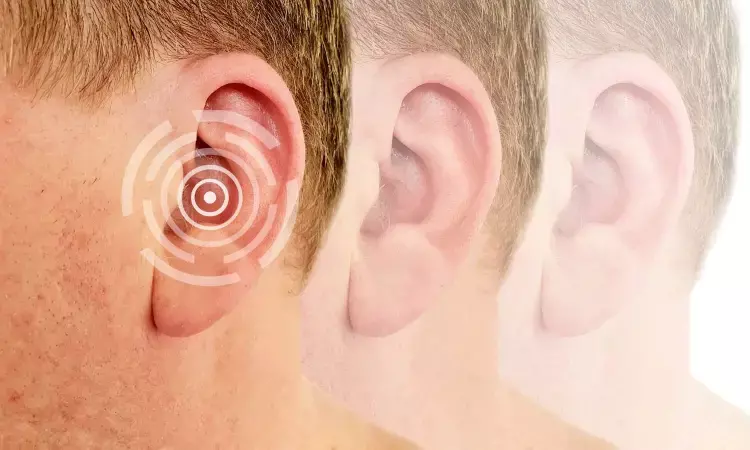- Home
- Medical news & Guidelines
- Anesthesiology
- Cardiology and CTVS
- Critical Care
- Dentistry
- Dermatology
- Diabetes and Endocrinology
- ENT
- Gastroenterology
- Medicine
- Nephrology
- Neurology
- Obstretics-Gynaecology
- Oncology
- Ophthalmology
- Orthopaedics
- Pediatrics-Neonatology
- Psychiatry
- Pulmonology
- Radiology
- Surgery
- Urology
- Laboratory Medicine
- Diet
- Nursing
- Paramedical
- Physiotherapy
- Health news
- Fact Check
- Bone Health Fact Check
- Brain Health Fact Check
- Cancer Related Fact Check
- Child Care Fact Check
- Dental and oral health fact check
- Diabetes and metabolic health fact check
- Diet and Nutrition Fact Check
- Eye and ENT Care Fact Check
- Fitness fact check
- Gut health fact check
- Heart health fact check
- Kidney health fact check
- Medical education fact check
- Men's health fact check
- Respiratory fact check
- Skin and hair care fact check
- Vaccine and Immunization fact check
- Women's health fact check
- AYUSH
- State News
- Andaman and Nicobar Islands
- Andhra Pradesh
- Arunachal Pradesh
- Assam
- Bihar
- Chandigarh
- Chattisgarh
- Dadra and Nagar Haveli
- Daman and Diu
- Delhi
- Goa
- Gujarat
- Haryana
- Himachal Pradesh
- Jammu & Kashmir
- Jharkhand
- Karnataka
- Kerala
- Ladakh
- Lakshadweep
- Madhya Pradesh
- Maharashtra
- Manipur
- Meghalaya
- Mizoram
- Nagaland
- Odisha
- Puducherry
- Punjab
- Rajasthan
- Sikkim
- Tamil Nadu
- Telangana
- Tripura
- Uttar Pradesh
- Uttrakhand
- West Bengal
- Medical Education
- Industry
Inner Ear Hemorrhage Detected by MRI Linked to Worse Prognosis in Sudden Sensorineural Hearing Loss: Study Shows

China: In a recent clinical study published in the American Journal of Otolaryngology, researchers highlighted the crucial role of magnetic resonance imaging (MRI) in evaluating sudden sensorineural hearing loss (SSNHL). The study revealed that MRI-detected inner ear hemorrhage is closely linked to a worse prognosis in affected patients.
Patients with evidence of hemorrhage on MRI experienced more severe initial hearing loss—particularly at speech frequencies (0.5–2 kHz)—along with poorer recovery outcomes and increased symptoms, such as dizziness, compared to those without hemorrhage. The findings emphasize the value of MRI in detecting inner ear abnormalities and offer important prognostic insights to guide clinical management.
SSNHL is characterized by a rapid onset of unexplained hearing loss, typically occurring over 72 hours. The condition is considered a medical emergency, as timely diagnosis and intervention are critical for optimal hearing recovery. However, determining the underlying cause and likely prognosis has remained challenging in clinical settings.
Against the above background, Shiyao Min, NHC Key Laboratory of Hearing Medicine Research, China, and colleagues aimed to investigate the link between MRI-detected inner ear hemorrhage and the prognosis and symptoms of SSNHL. For this purpose, the researchers enrolled 220 patients who were asked to undergo MRI and hearing tests.
The study led to the following findings:
- Patients with MRI-detected inner ear hemorrhage had significantly more severe hearing loss compared to those without hemorrhage.
- Differences in hearing before and after treatment were more pronounced in the hemorrhage group.
- The recovery of hearing at speech frequencies (0.5, 1, 2 kHz) was better in the group without inner ear hemorrhage.
- The non-hemorrhage group experienced fewer symptoms of dizziness and had a better prognosis for dizziness.
The study authors emphasize the pivotal role of MRI in identifying the location of inner ear hemorrhage and predicting the prognosis of sudden sensorineural hearing loss. The presence of inner ear hemorrhage on MR imaging provides valuable insights into the severity of symptoms and the potential for recovery in SSNHL patients. As observed, patients with inner ear hemorrhage experienced more severe symptoms and worse outcomes, particularly hearing loss and dizziness.
The study found a significant correlation between dizziness and inner ear hemorrhage, supporting prior research that links the presence of hemorrhage to a poorer prognosis in SSNHL.
"These findings emphasize the importance of MRI not only in identifying inner ear abnormalities but also in helping clinicians predict the disease course and tailor treatment strategies accordingly," the authors concluded.
Reference:
Min, S., Wang, J., Zhao, H., Chi, F., & Gao, N. (2025). MRI evidence of inner ear hemorrhage in prognostic assessment of sudden sensorineural hearing loss. American Journal of Otolaryngology, 104620. https://doi.org/10.1016/j.amjoto.2025.104620
Dr Kamal Kant Kohli-MBBS, DTCD- a chest specialist with more than 30 years of practice and a flair for writing clinical articles, Dr Kamal Kant Kohli joined Medical Dialogues as a Chief Editor of Medical News. Besides writing articles, as an editor, he proofreads and verifies all the medical content published on Medical Dialogues including those coming from journals, studies,medical conferences,guidelines etc. Email: drkohli@medicaldialogues.in. Contact no. 011-43720751


